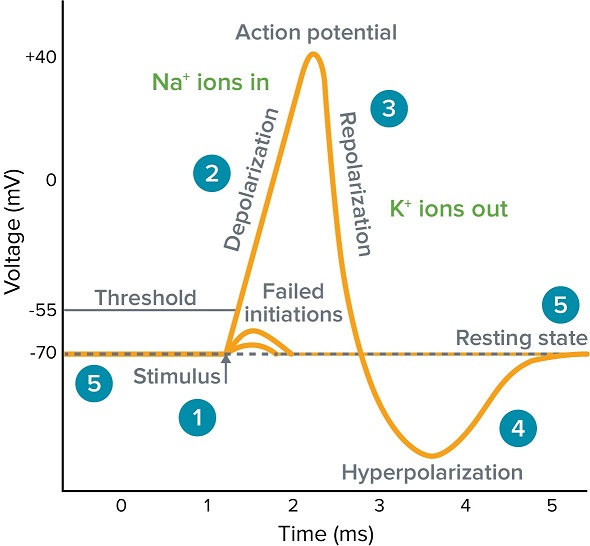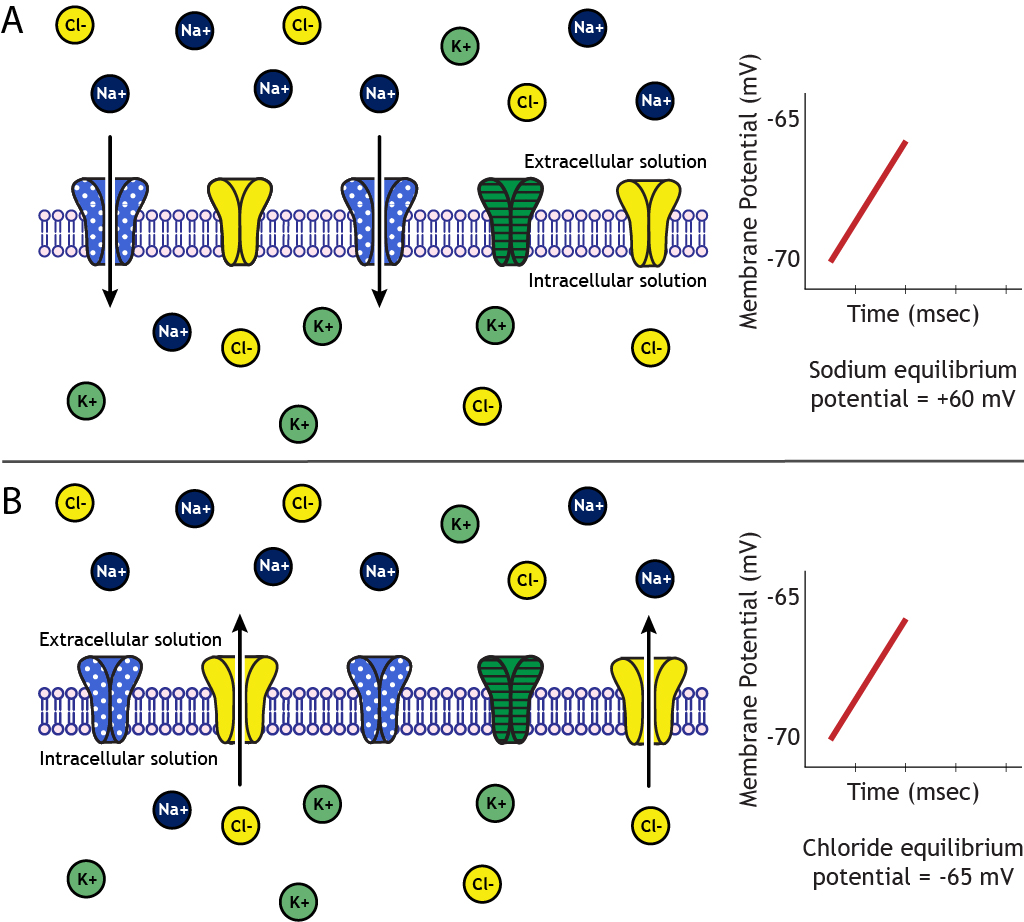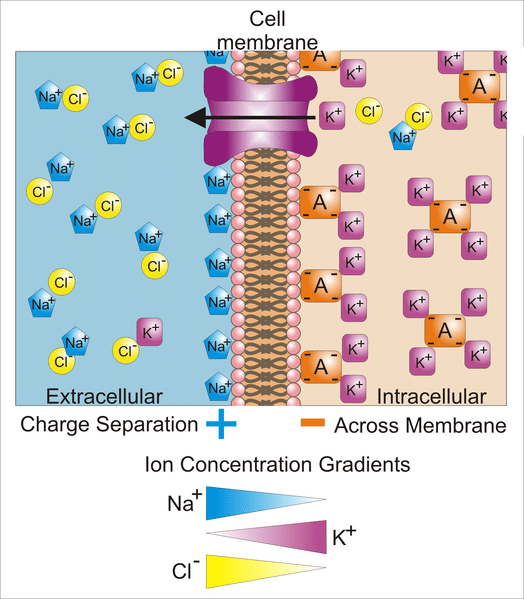Membrane Potential Is Best Described as
It has three presynaptic inputs-from neurons X Y and Z. The neuron and nervous system.

Cell Membrane Steady Potential An Overview Sciencedirect Topics
When X and Y are stimulated simultaneously the postsynaptic neuron depolarizes by 1 mV.

. The difference in total charge between the inside and outside of the cell is called the membrane potential. If X fires 10 times and Y fires 10 times. Basic Physics of Membrane Potentials.
Resting Membrane PotentialEach neurone behaves like a minute battery. Google Classroom Facebook Twitter. The membrane potential voltage is conventionally defined as Vϕinϕout where ϕin and ϕout are the potentials inside and outside the cell respectively.
The resting membrane potential ΔΨ of Xenopus. The cell membrane of a resting neuron is described as being _____. It is noninvasive tunable and acts over a negligible time scale.
Membrane Potentials Caused by Diffusion Diffusion Potential Caused by an Ion Concentration Difference on the Two Sides of the Membrane. Charge separation across the membrane. Observation of the electrical potential difference across the cell membrane is described as a new method for monitoring apoptosis of a single cell.
Traditionally the electrical potential difference across a cell membrane is expressed by its value inside the cell relative to the extracellular environment. The membrane potential is a distribution of charge across the cell membrane measured in millivolts mV. Which of the following describes the membrane potential maintained by the sodium potassium pump.
Sieve that lets fluids passively flow back and forth between the interior and exterior of the cell. Inspired by these features the scientific community builds biomimetic electric potential responsive nanopores Fig. International Review of Cell and Molecular Biology 2010.
The resting membrane potential of a nerve cell is -70 mV which indicates that the intracellular region of the nerve cell has a negatively charged environment in comparison to the extracellular environment. The membrane potential results from a separation of positive and negative ions across the cell membrane. The standard is to compare the inside of the cell relative to the outside so the membrane potential is a value representing the charge on the intracellular side of the membrane based on the outside being zero relatively speaking.
Transmembrane potential Ψ is a physical property given by the differences in electric potential between two sites separated by a membrane. Membrane potential is the difference in electrical potential between the interior and the exterior of a biological cell membrane. Ion channels that change their structure in response to voltage changes are called voltage-gated ion channels.
This potential known as the cell membrane potential or simple membrane potential is found in most nerve cells and ranges between sixty and seventy-five millivolts mV. 12 The resting membrane potential is the result of. The minus sign depicts that the inner area is negative.
The resting membrane potential of a cell is defined as the electrical potential difference across the plasma membrane when the cell is in a non-excited state. The resting membrane potential is changed to an action potential at 30 mV charge on it. Overview of neuron structure and function.
Electrotonic and action potentials. In biological membranes ionic pumps and channels originate ionic currents that separate the electric charges generating voltage gradients through the membrane Stein and Lieb 1986. The cell membrane could best be described as a.
That is there is a difference in the energy required for electric charges to move from the internal to exterior cellular environments and vice versa as long as there is no acquisition of kinetic energy or the. Across the cell membrane of each neurone there exists a small difference in electrical potential. Membrane potential also transmembrane potential or membrane voltage is the difference in electric potential between the interior and the exterior of a biological cell.
The membrane potential is maintained by the passive transport of anions into the cell to create a diffusion force. A membrane potential is best describe O A chemical potential gradient of a neutral solute across a membrane An electrochemical potential gradient of an ion across a membrane A charge separation voltage acroSs a membrane The electrochemical potential gradient of protons HT across a membrane The rate at which solutes cross a membrane. Difference between the electric potential of the cellular membrane matrices when the cell isnt excited.
Key facts about the membrane potential. No one believed the Romanians had seen what they described. Let us assume that the membrane in this instance is permeable to the.
We learned that the movement of an ion across the membrane that is not balanced by the movement of a counter ion leads to charge separation across the membrane and that this charge separation forms the basis for the establishment of a potential difference across the plasma membrane ie membrane potential V m. Difference between intra- and extracellular ion concentration Na-K pump Permeability of the cell membrane for ions. Thus option a is the right answer.
Or thousandths of a volt. This is the currently selected item. Voltage at which the inflow of Na causes an.
Generally the value of resting potential is -70mV. The membrane potential is maintained by moving sodium ions extracellularly and potassium ions intracellularly. In Figure 51Athe potassium concentration is greatinsidea nervefiber membrane but very low outside the membrane.
Anatomy of a neuron. A postsynaptic neuron has an RMP of -70mV and a typical threshold of -55mV. This difference is known as the membrane potential.
Voltage-gated ion channels regulate the relative concentrations of different ions inside and outside the cell. If the membrane potential becomes more negative than the resting membrane potential the membrane is _____. Factors that determine it.
Complete the following questions regarding membrane potentials. QUESTION 2 A membrane potential is best described as A chemical potential gradient of a neutral solute acrose a membrane An electrochemical potential gradient of an ion across a membrane A charge seperation voltage ecross a membrane memoran The electrochemical potential gradient of protons HT acros The rate at which solutes cross a. The Romanians work was not as well-publicized.
Stimulation of neuron X causes the postsynaptic neuron to depolarize by 05 mV. The membrane potential reaches the threshold potential The threshold potential of an excitable cell is the. How the resting membrane potential is established in a neuron.
Membrane potential of a neuron when it is not transmitting any signal with respect to its immediate surrounding is called resting potential. If the membrane potential becomes less negative than the resting membrane potential the membrane. Skin that provides a barrier between the interior and exterior of the cell.

What Is An Action Potential Action Potential Chart Membrane Potential Molecular Devices

Membrane Potential Foundations Of Neuroscience

Action Potential The Resting Membrane Potential Generation Of Action Potentials Teachmephysiology
Comments
Post a Comment